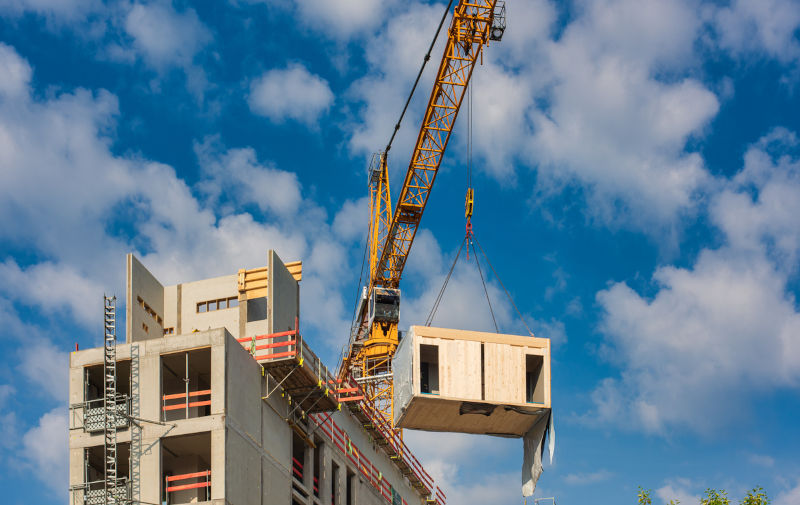Prefab housing evolution: Higher quality, greater affordability, broader acceptance
August 16, 2025
A new kind of residential landscape is taking shape, not with the chaotic clang of construction, but with the rhythm and precision of a symphony – each piece arriving on time, perfectly in tune and ready to play its part.
In this “prefab landscape”, residents value quality and affordability, while also seeking a sense of harmony, a living experience that feels thoughtfully composed.
In a move that could help evolve Australia’s approach to affordable housing, the Australian Council of Trade Unions stated its support for modular housing solutions on 3 August.
The ACTU said unions “support getting behind modular housing, which can be quicker and cheaper than using conventional building materials; backed by a faster development approvals’ process for new housing and green energy projects”.
As the country grapples with rising housing needs, these modern solutions could bring much-needed relief to many Australians.
Today, prefab housing is gaining momentum in many parts of the world, a potential game-changer in addressing housing challenges.
Just over a month ago, Ingvar Eyfjord, chief executive of Adaltorg ehf, a real-estate development company in Iceland, visited Jiangmen, south China’s Guangdong Province.
“We came to Guangdong to buy building modules that resemble building blocks,” said Eyfjord.
Factors such as limited sunlight, low temperatures and less labour availability have slowed the pace of house construction in Iceland. Six years ago, however, 78 building modules produced in Jiangmen were shipped to Iceland, and workers used them to build a hotel in just nine days.
The building modules Eyfjord planned to buy this year were being produced in the workshops of China International Marine Containers Modular Building System in Guangdong.
The company maximises the solution of potential issues on the construction site by addressing them in the factory. Its modular design allows for flexible combination and expansion, with building heights reaching up to 40 storeys. The factory prefabrication rate exceeds 90%, shortening the overall construction timeline by approximately 50% compared to traditional building methods, while reducing construction waste by about 50% and carbon emissions by more than 75%.
According to the United Nations Comtrade database, China exported prefabricated building components to Iceland valued at approximately US$487,000 in 2023. In 2024, this figure rose to US$1.09 million, reflecting active and growing trade in modular housing materials.
In reporting the ACTU’s support for modular housing, the Australian Financial Review cited figures from the National Housing Infrastructure Fund – just 5% of new homes in Australia are modular or prefabricated, compared with 84% in Sweden and 28% in Japan.
Why is prefab housing so popular in Sweden? Its experience offers valuable insights for countries looking to catch up with this growing trend.
Sweden leads in prefab housing quality. To ensure building safety, the government sets clear performance-based goals and allows builders the flexibility to determine how best to achieve them.
The country’s longstanding practice, dating back to the 1940s, has created well-established production systems. Some companies adopt assembly-line processes inspired by automotive manufacturing, producing volumetric modules with precision and consistency. Some builders use high-quality precast concrete frames. Benefits include excellent resistance to mould and moisture, low-maintenance requirements and long lifespans.
During the long Nordic winters, prefab homes in Sweden offer good insulation, with precision-engineered systems that ensure high energy efficiency and living comfort. This approach could help address similar challenges in some countries, where insulation in older buildings remains a concern during the winter months.
The costs of prefab housing are another concern of residents. According to Homeplex, a California-based organisation, prefab homes are 10-25% cheaper than their traditional counterparts due to such factors as bulk material purchasing and minimal waste.
However, some professionals argue that early investment could be high. For example, SENSUM, an organisation with offices in Melbourne, Sydney and Adelaide, said there is an innovation premium for early adopters.
The initial learning curve that organisations and projects face often brings additional costs, such as developing and testing new materials and systems, mistakes or inefficiencies from trying unfamiliar approaches, and the need to reorganise business processes. This “learning premium” can add 8-15% to the cost of early projects, until the curve flattens and the benefits of scale begin to emerge.
In this context, trade and cross-border workshops can play a significant role. The trip of the Icelandic businessman Eyfjord to Guangdong highlights that quality improvements and cost reduction can be achieved through complementarity in an era of globalisation.
Meanwhile, public perception, limited customisation and design flexibility, financing and appraisal challenges, cultural hesitation, industry barriers and risk aversion can all contribute to buyers’ resistance to prefab housing.
Against this backdrop, public education campaigns, clearer industry standards, regulatory reform, flagship prefab projects demonstration and the development of financial instruments could help overcome buyers’ resistance.
A prefabricated house, transported on trucks via ferry to North Stradbroke Island off the coast of Brisbane in the middle of the night, won the Australian House of the Year award at the 2025 Houses Awards on 1 August.
Built from steel and timber in a Brisbane factory and transported to the island in modules, Blok Three Sisters is, according to the award’s jury citation, a shining example of “stealth density”.
“It shows it’s possible to make multi-storey, multi-residential housing in a factory at a very high standard that could be applied to other models, like social housing,” said its architect, Daniel Burnett.
Nowadays, prefab housing is breaking new ground and evolving in exciting ways. It offers a fresh and valued alternative for modern living.
The views expressed in this article may or may not reflect those of Pearls and Irritations.
